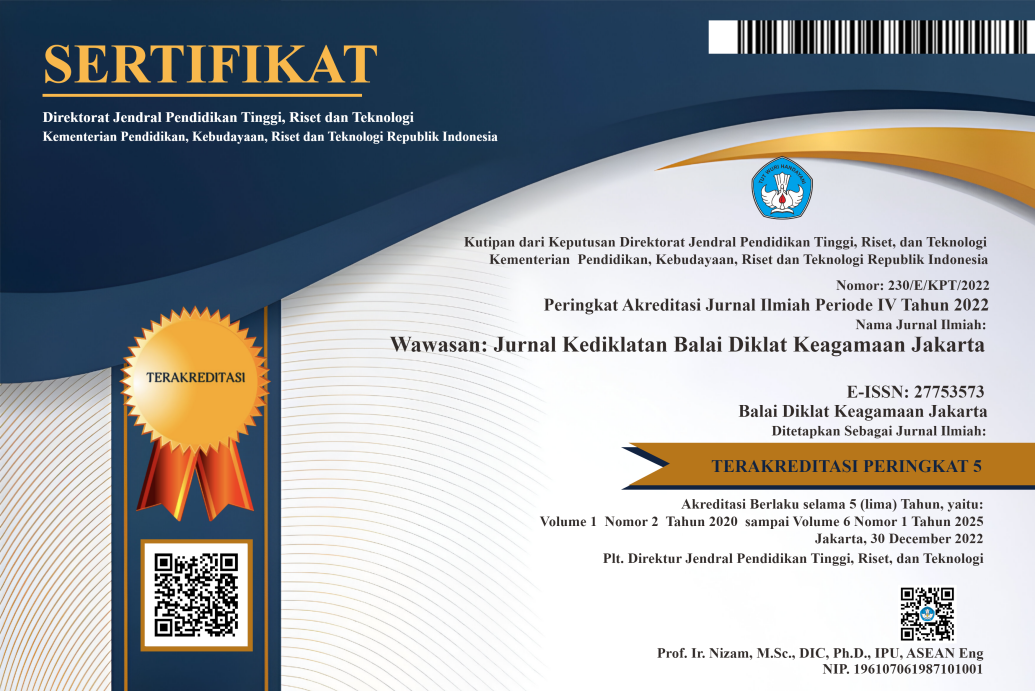CAPITALIZING ON LEAD IN STAGE TO NURTURE CRITICAL THINKING: AN ATTEMPT TO COMBAT FAKE NEWS FOR SCREENAGERS
DOI:
https://doi.org/10.53800/wawasan.v1i2.32Keywords:
critical thinking skill, lead in stage, critical thinking activities, fake newsAbstract
The study aims at improving critical thinking skill of screenagers – students who frequently face their smartphone screens – to be more critical consumers of information in the Internet era. Technological advances have made the instantaneous access to information possible. However, valid information exists in the same context as the fake ones. The challenge now appears to be abilities to distinguish valid and fake information. Using a 10-minute critical thinking activities during the lead in stage as the action, the research explores how integrating critical thinking and problem solving in daily classroom activities help nurture students to be critical in the information coming to their social media accounts. To achieve the objectives, a classroom action research involving cycles of Planning, Acting, Observing, and Reflecting was conducted in an Islamic-based higher secondary school in Tangerang, Banten. This research utilized a teacher's journal, a questionnaire, and an interview guide for eliciting data. The data were analyzed descriptively and the results showed that students’ critical thinking skill improved from cycle 1 to cycle 2. Results from questionnaire showed that students could differentiate fact and opinion as well as analyze information on their screens. A focus-group interview supported students’ improvement on critical thinking skill highlighting that their ability to distinguish valid or fake information improved gradually. Innovative activities that involve teachers, students, and school policy makers with critical thinking skill improvement should be encouraged.
Downloads
References
Arendas, R, (1998). Learning to Teach (The Fourth Edition). New York: The McGraw-Hill Companies, Inc., 240.
British Council, (2015). Connecting Classroom: An Introduction to Core Skills for Teachers. www. britishcouncil.org.
British Council, (2015). Connecting Classroom: Teaching Critical Thinking and Problem Solving. www. britishcouncil.org.
Funke. D, (2017). Here’s Why Fighting Fake News is Harder on WhatsApp than on Facebook; an article. https://www.poynter.org/news/her es-why-fighting-fake-news-harder- whatsapp-facebook. Accessed on November 27, 2017.
Goodsett, M. (2017). Critical Thinking and the ACRL Framework: Fake News and Fallacies. Michael Schwartz Library Publications 144. Available at https://engagedscholarship.csuohio. edu/cgi/viewcontent. Accessed on November 27, 2017.
Mark. J. 2008. Teaching Critical Thinking and Problem Solving’. The Delta Pi Epsilon Journal. (L) 2, Spring/Summer.
Nolan, S. (2017). Critical Thinking and Information Fluency: Fake News in the Classroom: Opportunities for Teaching Scientific And Information Literacy, Psychology Teacher Network’. Available at: http://www.apa.org/ed/precollege/ ptn/2017/05/fake-news.aspx. ccessed on November 23, 2017.
Snyder, Lisa G. & Snyder, Mark. J. 2008. Teaching Critical Thinking and Problem Solving’. The Delta Pi Epsilon Journal. (L) 2, Spring/Summer.
Willingham, D. 2007. Critical Thinking: Why is it Hard to Teach, American Federation of Teachers, 9-15. https://www.aft.org/sites/default/fi les/periodicals/Crit_Thinking.pdf. Accessed on Januari 5, 2018
Downloads
Published
Issue
Section
License
Copyright (c) 2020 Wawasan: Jurnal Kediklatan Balai Diklat Keagamaan Jakarta

This work is licensed under a Creative Commons Attribution-NonCommercial-ShareAlike 4.0 International License.


















